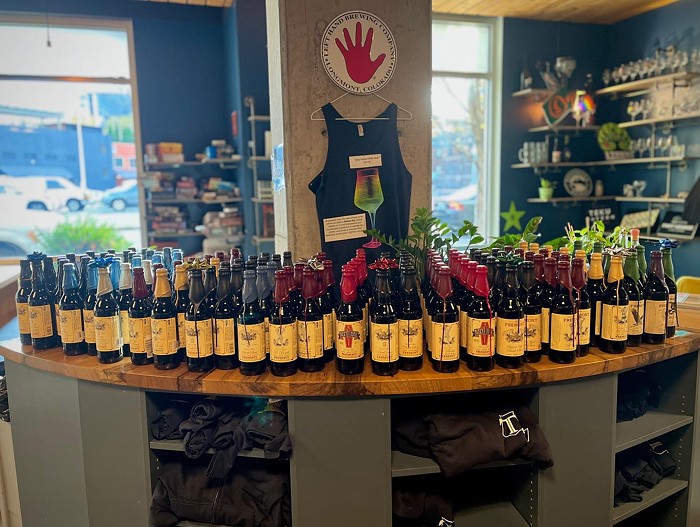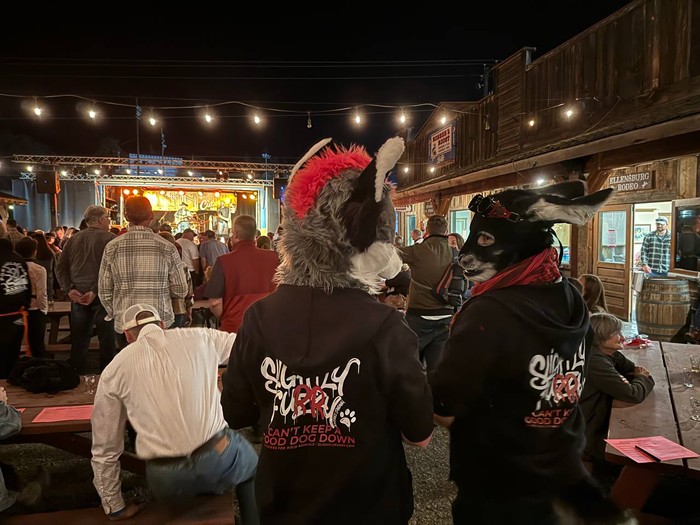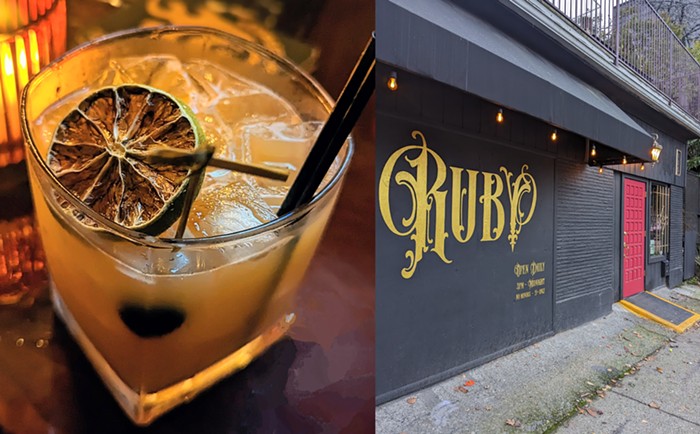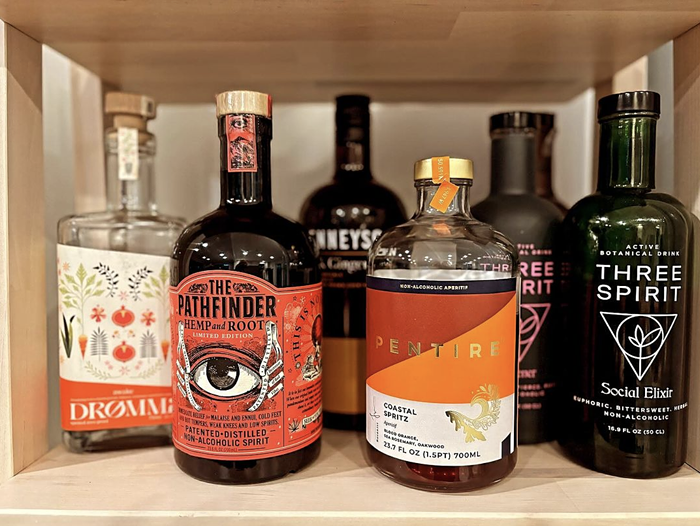When I first met Dave Lichterman, owner of Windy City Pie, it was just a few days after "Back to the Future Day," aka October 21, 2015, the day Marty McFly time-travels to in the movie Back to the Future Part II. Lichterman told me he had dressed up as the character Doc Brown to deliver his Chicago-style deep-dish pizzas that day, which confused many of his customers. (He also tried, unsuccessfully, to find a DeLorean to drive around in.)
Lichterman cracks a lot of jokes, but he grew serious when he told me that the Back to the Future movies actually had a profound influence on his life. They inspired him to pursue a degree in engineering at the University of Illinois, where his own future as a deep-dish pie master was sealed—even though it took him 10 years (and an entirely separate career as a software engineer) to realize it.
As a college student, Lichterman fell in love with the deep-dish pizza at a local restaurant called Papa Del's in Champaign, Illinois. Later, he become enchanted with the pies at Pequod's Pizza and Burt's Place in the Chicago suburb of Morton Grove. Lichterman says his pies draw heavily on these influences, but they're also unique.
Atop a substantial base of golden-brown dough is a ring of caramelized cheese in a beautiful, intricate, lacy pattern. The pizza looks like it's wearing a regal black crown made of crispy, salty, delicious cheese.
I'm typically ambivalent when it comes to pizza. Neapolitan, wood-fired, New York–style—I don't care what it is, as long as it tastes good. The few deep-dish pies that I've had here in Seattle haven't done much for me. They take a long time to bake, and the results are usually tomato sauce and pizza toppings encased in a dense, flavorless shell of bread. But Windy City's pies—which are currently only available by pickup or delivery—are different.
I met up with Lichterman ostensibly to talk about his business, but mainly to watch how he crafts his magical, nearly burned, cheesy crust. After breaking up squares of low-moisture mozzarella with his hands, he layers them on top of the dough, making sure they lie against the pan's edges. "And that's pretty much the secret to the caramelized cheese edge," he joked.
Along with the caramelized cheese border, for which Lichterman gives credit to Burt Katz of Pequod's and Burt's Place, his pies also have boldly flavored tomato sauce and a distinct crust.
"Pillowy" is the first word that comes to mind when describing Windy City's dough, because it's simultaneously chewy and wonderfully soft. It also has a noticeable almost-brioche-like sweetness. Lichterman confirmed that he enriches his dough, but declined to specify what he uses. He was a bit more forthcoming about his aggressively spiced tomato sauce, which is tangy, bright, and dotted with plenty of oregano and black pepper. There are also little flecks of shredded cheese, because more cheese is always a good idea.
Given the already strong flavors of Windy City's basic elements, I preferred the relative simplicity of the Classic ($27), made with house sausage, caramelized onions, mushrooms, and red bell pepper, to the Omnivore ($29), which includes sausage, spinach, caramelized onions, roasted garlic, and a layer of pepperoni slices. The pepperoni edges are wonderfully crispy, but the meat makes the pizza particularly oily. Still, three of us had no problem finishing it, even though Lichterman says each pie "feeds four hungry adults." (Lichterman told me that he has since changed the way he dresses the Omnivore and the "pepperoni goes below the sauce now, so it can cook longer and not turn the pie into a pile of grease during transit.")
While both are good pies, they don't compare to the oddball creativity on display in the Hot Island ($27), which is made with Lichterman's own garlicky sausage, pieces of canned pineapple, slices of raw jalapeño, and, best of all, a layer of sweet garlic spread. Lichterman slow-roasts garlic cloves in the oven for five hours, transforming their flavor from pungent to mellow and nutty. It's the sort of stuff I would keep on hand in my fridge to spread on sandwiches, crackers—or just eat off a spoon.
As someone who generally abhors pineapple on pizza (and most appearances by fruit in savory dishes), I was taken aback by how much I loved the Hot Island. Instead of being dominated by syrupy pineapple chunks or the heat of the chilies, the pizza was in perfect balance, each bite alternately delivering spiciness and sweetness, meaty richness and vegetal freshness. It was thrilling.
But recalling the time I spent with Lichterman, I shouldn't have been surprised. He was fastidious in his use of a digital scale, measuring out exact amounts of cheese, sauce, and sausage to get precise proportions. He talked casually about his home sous-vide machine and then very seriously about the advantages of having both a deck oven and a convection oven to bake his pizzas in. He spoke with no shortage of marvel at the years of work and recipe development that he has put into Windy City, which is just now beginning to pay off.
Lichterman initially offered to deliver his pies anywhere in Seattle, but business has increased so much that he now asks customers if they can pick them up near the kitchen where he bakes them. As it turns out, plenty of people are more than willing to show up on a dark street corner in Sodo and wait for a stranger to bring them a deep-dish pizza. Lichterman was recently able to hire his first employee—and orders for pickups and deliveries, which must be placed at least one day in advance, are often booked several days ahead.
As a kid growing up in Chicago, Lichterman says he was "always messing around with duct tape, paper clips, and stuff—just, you know, making things." And while he's turned his attention from software to dough, his level of focus is the same. The results are just different—and, it turns out, more satisfying.
"When you cook food, you are making something that literally becomes a part of the person you are making it for. What's cooler than that?" ![]()



















